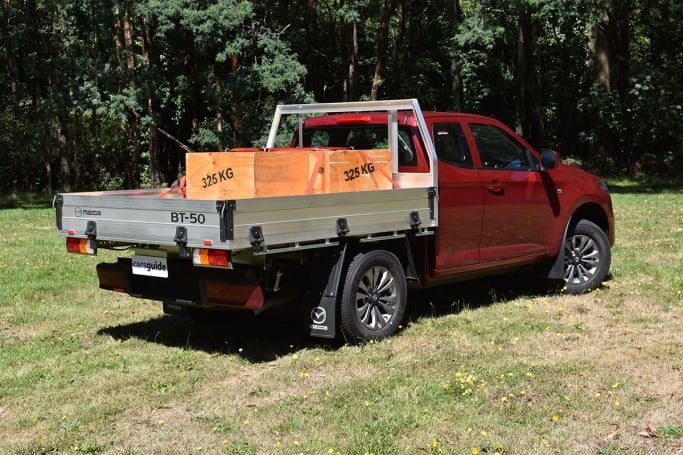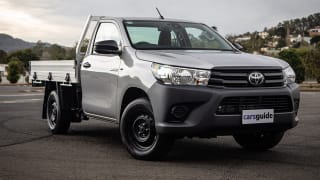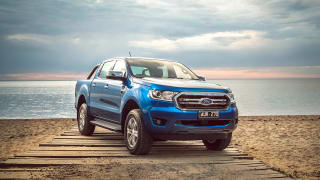The BT-50 single-cab and extended cab-chassis variants are available only in one work-focused XT model grade. 2x4 models come standard with a six-speed automatic transmission while 4x4 models offer a choice of either auto or six-speed manual transmission.
Our test vehicle is an XT Freestyle Cab 4x4 finished in Red Volcano Mica with a manufacturer’s list price of $47,550 in cab-chassis form. When fitted with a Mazda Genuine Accessories standard aluminium tray as seen here ($2300), the list price increases to $49,850 plus on-roads.

Although XT is the base model it comes standard with upmarket features like 17-inch alloy wheels with 255/65 R17 tyres and a full-size steel spare, auto LED headlights with halogen DRLs, body coloured door handles, rear bumper and exterior mirrors plus a reversing camera, which is not commonly offered as standard issue on tray-tops.
Inside there’s black cloth upholstery, carpet, adaptive cruise control (automatic models only) and an infotainment system with steering wheel-mounted controls, 7.0-inch colour touchscreen, DAB+ digital radio and multiple connectivity including wireless/USB Apple CarPlay and Android Auto (USB only). This system is more user-friendly than previous BT-50 offerings but still not class-leading in terms of intuitive software.


















